Andrew
Forum Replies Created
Viewing 13 posts - 1 through 13 (of 13 total)
-
AndrewParticipantWow!in reply to: Capturing Nature’s Color Palettes #718778
-
AndrewParticipantI have been too heavy with my shading, so this was an opportunity to lighten it up and make the important things be visible. Negative space helps get the shape and spacing correct, with measuring to make sure you’re on track. I forgot to step back mid stream... and now see my bird is looking further to the right! bTW, we got 2” snow today.
 in reply to: Giving Your Drawings Depth #699766
in reply to: Giving Your Drawings Depth #699766 -
AndrewParticipantIntense and satisfying, but not fun... it was a collection of complex lines and spaces that became shapes. It was easy to become confused. The desire to flip the picture was mostly part of the need for rest. When done, a strong desire to colour in the spaces. Those bold lines on the breast and the intricate lines about the head make you appreciate the song sparrow patterns that vary from bird to bird.
 in reply to: Drawing What You See – Upside Down Drawing #698945
in reply to: Drawing What You See – Upside Down Drawing #698945 -
AndrewParticipantI happened to catch a period when the feeder was very busy, the twenty or so birds seeming frantic to feed themselves, each other and those in the nest. They were rarely in one position for more than a second. Though I do see repetitive gestures at other times, today they seemed rare. I found it tiring today. Trying it on the Caspian terns (below) the other day was marginal better as the number of subjects were fewer, but they never stop moving. In both cases, I was discovering things and my eye for details was improving.
 in reply to: Capturing Behavior – Gesture Drawing #698331
in reply to: Capturing Behavior – Gesture Drawing #698331 -
AndrewParticipantLike Heather, my return lines drawing right to left were short when drawing from the photos. It was different drawing live; there, I ended a couple inches below rather than to the right. My drawings very consistent. Consistently looking nothing like the object, as well, but they had essentially the same good and poor points and finished in the same place relative the the start. Fun!in reply to: Focusing on Your Subject – Blind Contour Drawing #693294
-
AndrewParticipantI noticed the bend in the cedar branch and how they are related to the greenery, and how loose the twigs are. I took more time studying the underside of the hemlock needle, and how dense they are. So... more detail seen and investigated. Balancing data, text and drawings will take practice. Need to investigate more before drawings to determine what is needed, them lay out, leaving space for additional discoveries.
 in reply to: The Power of Comparison #691032
in reply to: The Power of Comparison #691032 -
AndrewParticipantGabriel Garcia Marquez’s book sounds like a good read for this point in life. :) You catch the feeling of the landscape. Thank-you for sharing!in reply to: Noticing Themes in Nature #683800
-
AndrewParticipantI found it hard to keep my eyes closed for more than three minutes because I wanted to see as well as hear what was going on around me. I could feel relaxing, then when I picked up my phone to record a sound, the stress went back up again. I heard soft sounds I might not have heard when walking. I could definitely focus in on different sounds, then move onto the next. For the days presented here, my eyes remained open. I seem to be more comfortable with my pencil the second day. The sense of spring arriving was felt and heard, though there was little in the way of greening happening here.

 h
in reply to: Opening Your Senses #683721
h
in reply to: Opening Your Senses #683721 -
AndrewParticipantThis makes me miss the east coast. :(in reply to: Noticing Themes in Nature #683410
-
AndrewParticipantBeautiful job on the pot of daffodils, Mudito! And your “straight lines” work well with it.in reply to: Noticing Themes in Nature #683408
-
AndrewParticipantBeautifully drawn otter! I saw them for the first time in our river two years ago. I was in a canoe, and it popped up its head. We were both startled. Then three heads popped out to check me out... wished I had a camera ready, but your drawing takes me back!in reply to: Opening Your Senses #682567
-
AndrewParticipantVery cool integration of text and image!in reply to: Opening Your Senses #681724
-
AndrewParticipantThe advantage of photography is, with a good photo, you can see a great deal of detail of the item you focused on. This can be reviewed later. In the meantime, you’re focusing on light, settings, background blurr, composition, etc. You are in the moment with your piece of technology. Hopefully, you’ll catch the moment and then remember to look at the product someday and be thrilled. You can also catch a quick happenstance that, even if blurry, can provide essential information. The advantage of drawing is that you can focus on what is most important, though you won’t have the detail one can catch in a photograph. You can add portions of the background important to you, or write it beside the drawing, to include vital environmental factors, behaviour, sounds. Lighting is less important. You are engaged with your subject, rather than technology. It was helpful to work from the photo because it gave me time to get shape and catch important details. My issue came when I had “finished”; then I magnified the photo. “Oh, look how soft it is. Look at those little feather details.” Then I tried to adjust the drawing to include them, and I lost out. I had already included the vital bits and they got lost in the result. I would have been better to do a focus circle for some, and write text for others. If I hadn’t drawn the warbler, I wouldn’t have noticed the fine detail of the feathers, bill, the plumpness of the bird or how it grips the branch. I may not have noticed the blackened back, leg colour or the soft eye ring.
 in reply to: Jump Right in! #679744
in reply to: Jump Right in! #679744
Viewing 13 posts - 1 through 13 (of 13 total)
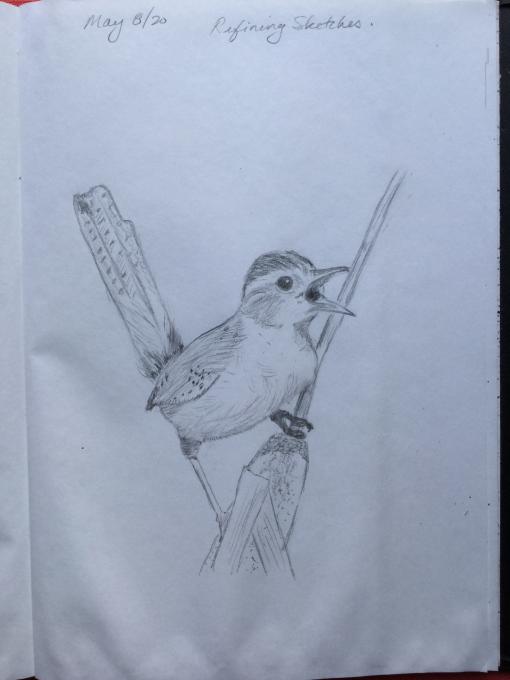
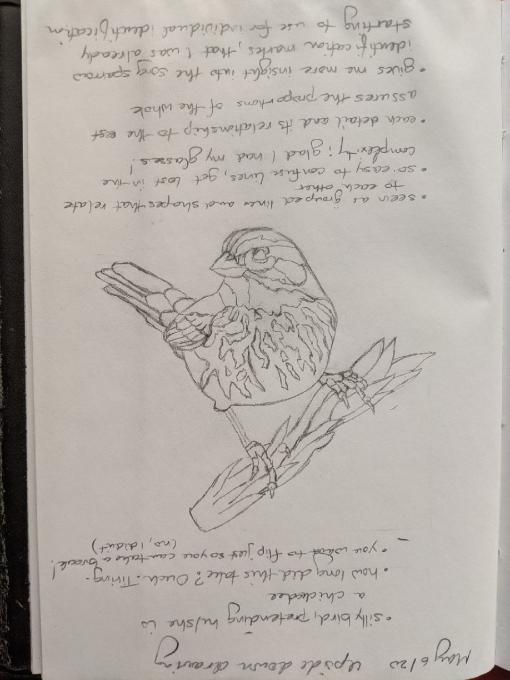

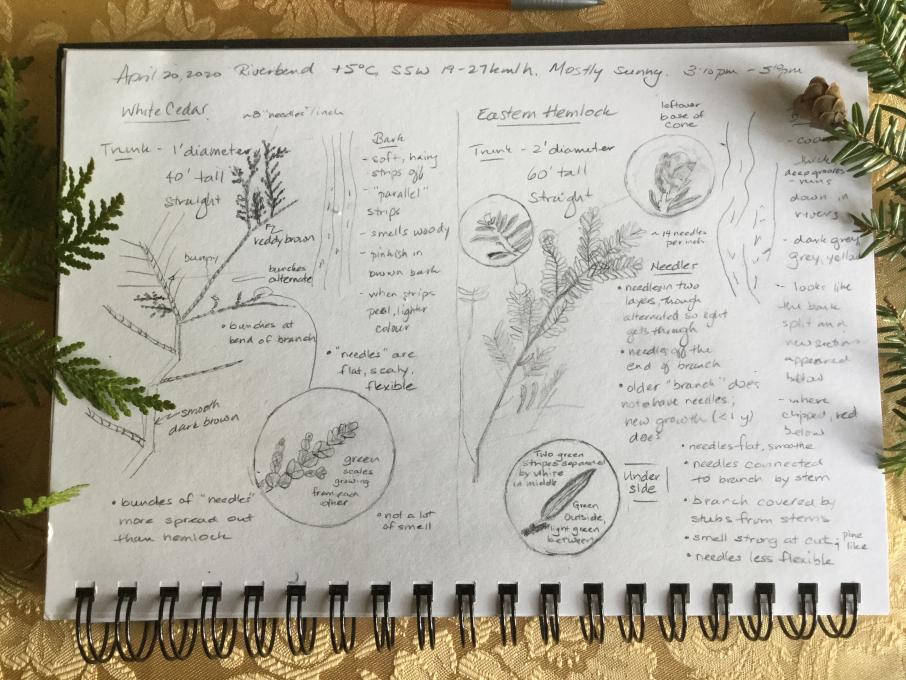
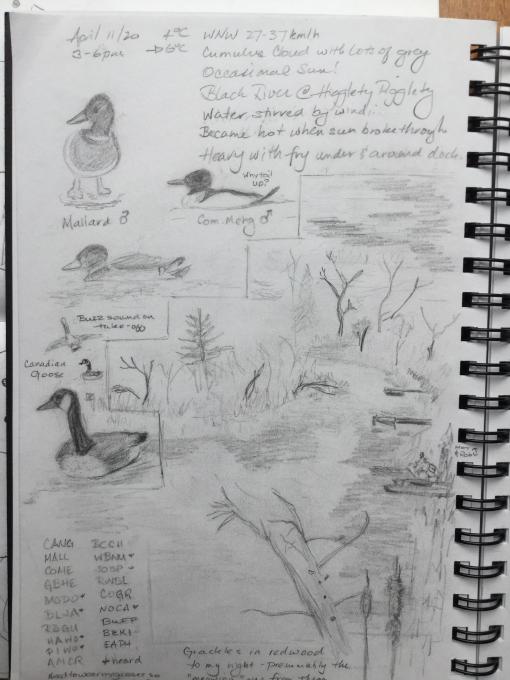
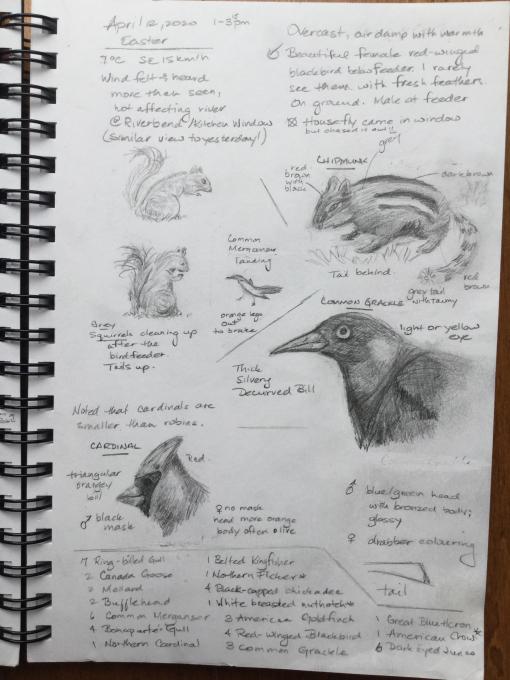 h
h
